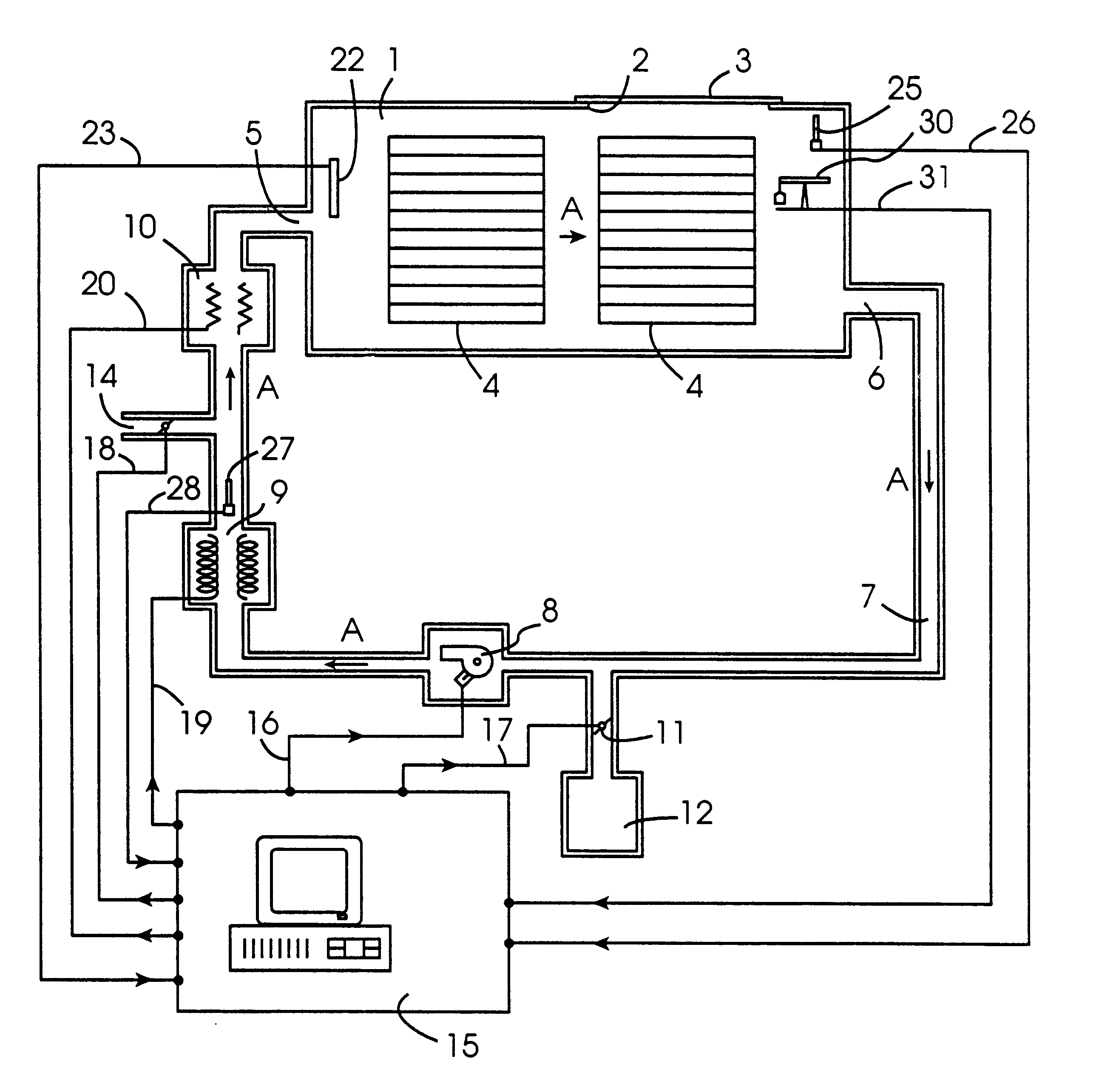Dried product and a drying process
- Summary
- Abstract
- Description
- Claims
- Application Information
AI Technical Summary
Benefits of technology
Problems solved by technology
Method used
Image
Examples
Embodiment Construction
Before describing examples of the dehydration process according to the invention, a drying apparatus which is suitable for carrying out the dehydration process will first be described with reference to FIG. 1. It will of course be appreciated that the dehydration process is not limited to being carried out in the apparatus of FIG. 1, and many other different types of apparatus may be used. The drying apparatus of FIG. 1 comprises an enclosed insulated drying chamber 1 having an access opening 2 which is closed by a door 3 for accommodating trays 4 on which products to be dehydrated are placed into the chamber 1. An inlet opening 5 is provided to the chamber 1 for introducing gaseous drying medium to the chamber 1, and an outlet opening 6 provides for removal of the drying medium from the chamber 1. A duct 7 extends from the outlet 6 to the inlet 5 for recirculating drying medium back to the chamber 1. A fan 8 in the duct 7 circulates drying medium through the duct 7 in the direction...
PUM
 Login to View More
Login to View More Abstract
Description
Claims
Application Information
 Login to View More
Login to View More - R&D
- Intellectual Property
- Life Sciences
- Materials
- Tech Scout
- Unparalleled Data Quality
- Higher Quality Content
- 60% Fewer Hallucinations
Browse by: Latest US Patents, China's latest patents, Technical Efficacy Thesaurus, Application Domain, Technology Topic, Popular Technical Reports.
© 2025 PatSnap. All rights reserved.Legal|Privacy policy|Modern Slavery Act Transparency Statement|Sitemap|About US| Contact US: help@patsnap.com


